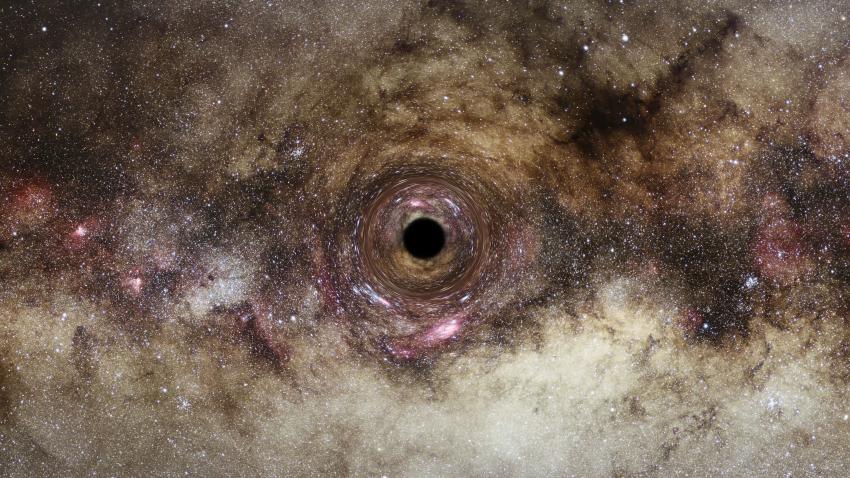This ultramassive black hole was detected using gravitational lensing and supercomputer simulations to examine how light is bent by a black hole inside a galaxy hundreds of millions of light years from Earth. A gravitational lens occurs when the gravitational field of a foreground galaxy appears to bend the light of a background galaxy, meaning that we observe it more than once. The team simulated light traveling through the Universe hundreds of thousands of times. Each simulation includes a different mass black hole, changing light’s journey to Earth.
When the researchers included an ultramassive black hole in one of their simulations the path taken by the light from the faraway galaxy to reach Earth matched the path seen in extremely high-resolution images from NASA’s Hubble Space Telescope.

Credit: ESA/Hubble, Digitized Sky Survey, Nick Risinger (skysurvey.org), N. Bartmann. Attribution CC BY 4.0
The success of the technique means that perhaps astronomers can discover far more inactive and ultramassive black holes and investigate how they grew so large.
Lead author Dr James Nightingale, Department of Physics, Durham University, said, “This particular black hole, which is roughly 30 billion times the mass of our Sun, is one of the biggest ever detected and on the upper limit of how large we believe black holes can theoretically become, so it is an extremely exciting discovery.”





Comments